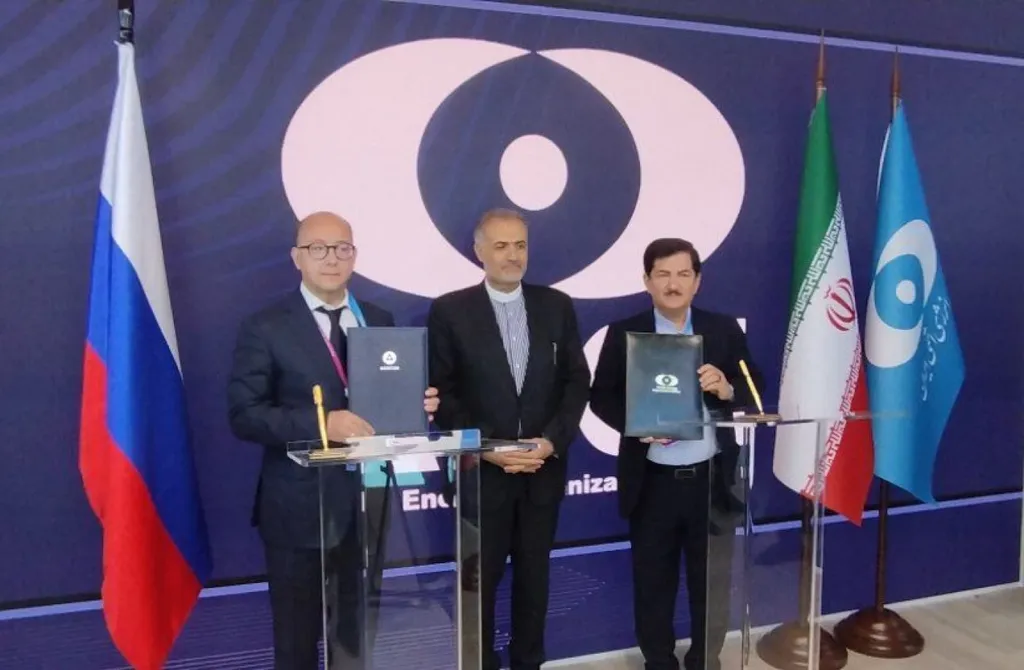Iran and Russia have inked a $25-billion agreement for the construction of at least four nuclear power plants in Iran, according to the Islamic Republic News Agency (IRNA). The deal, announced on September 26, follows a memorandum of understanding signed by Rosatom, Russia’s state-owned nuclear power company, just two days prior. While Rosatom initially remained tight-lipped about the number of reactors, the agreement specifies four new reactors, each with a generation capacity of 1,255 MW, to be built in Sirik, Hormozgan.
This development comes against a backdrop of escalating geopolitical tensions, with the United Nations expected to impose further sanctions on Iran, including those targeting its nuclear program. The agreement was finalized just hours before the anticipated “snapback sanctions” from European officials, triggered by Britain, France, and Germany, who accuse Iran of non-compliance with the 2015 nuclear agreement. Meanwhile, China and Russia proposed a draft resolution at the UN Security Council to extend talks by six months, though analysts predict it lacks sufficient support to pass.
Currently, Iran operates a single nuclear power plant, the 1-GW Bushehr facility, located in the southern part of the country. Construction is ongoing at two additional units at Bushehr, initiated in 2019 and 2020, which could become operational as early as next year, according to Russian officials. The latest agreement follows a visit to Moscow by Mohammad Eslami, Iran’s vice president and head of its nuclear program, who indicated that at least four future reactors would be located in Bushehr. Iran aims to generate at least 20 GW of electricity from nuclear power by 2040, with Russian officials previously outlining plans to build up to eight reactors in the country.
This deal could significantly alter the trajectory of Iran’s energy sector, potentially boosting its nuclear generation capacity and reducing reliance on fossil fuels. However, the geopolitical landscape remains fraught with challenges, as sanctions and international relations continue to shape the future of Iran’s nuclear ambitions. The agreement also underscores Russia’s expanding role in the global nuclear energy market, particularly in regions facing international sanctions. As the situation unfolds, industry stakeholders will be closely watching how these developments impact Iran’s energy mix, regional dynamics, and the broader nuclear power sector.

